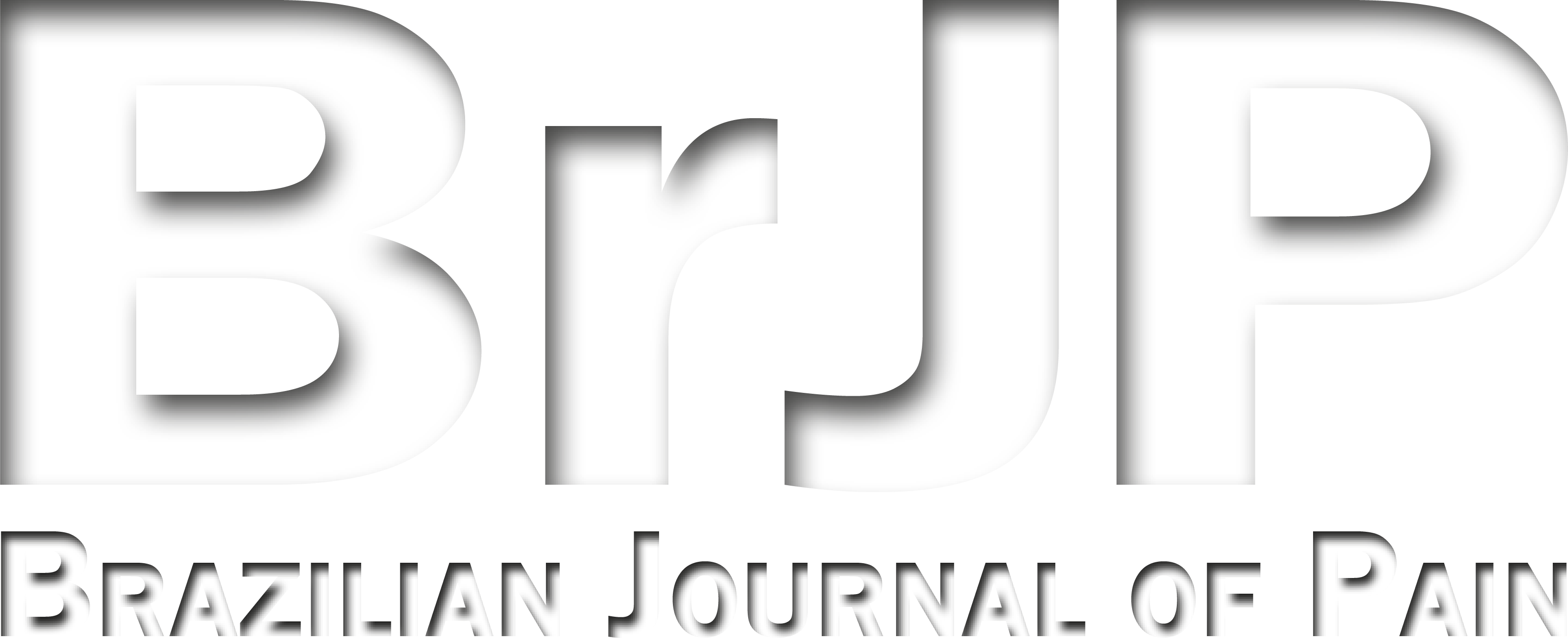Correlation between sleep bruxism and headaches evaluated by polysomnography
Correlação entre bruxismo do sono e cefaleias avaliados pela polissonografia
Aline Xavier Ferraz; Carla Fabiane da Costa Zonta; Rodolfo Jorge Fortes Kubiak; Flávio Magno Gonçalves; Wagner Hummig; Jose Stechman-Neto
Abstract
METHODS: The sample consisted of observing 76 electronic records of patients (60 females and 16 males) diagnosed with some type of primary headache. The adopted criteria were those of the International Classification of Headache Disorders, 3rd edition (ICHD-3 Beta). All patients underwent PSG with electrodes on the masseters to assess the presence of SB. Data was analyzed using Chi-square and Student t tests, with a confidence interval of 95%, adopting p<0.05 as level of significance. The JASP software, version 0.17.2.1, was used for analyses.
RESULTS: There were no statistically significant differences regarding the correlation between different types of primary headaches and the presence of sleep bruxism.
CONCLUSION: The results suggest that the presence of SB identified by polysomnography does not point to a significantly high incidence of primary headaches compared to individuals in whom the absence of bruxism was confirmed by the same method.
Keywords
Resumo
Palavras-chave
References
1 Manfredini D, Ahlberg J, Aarab G, Bracci A, Durham J, Ettlin D, Gallo LM, Koutris M, Wetselaar P, Svensson P, Lobbezoo F. Towards a Standardized Tool for the Assessment of Bruxism (STAB): overview and general remarks of a multidimensional bruxism evaluation system. J Oral Rehabil. 2020;47(5):549-56.
2 Lobbezoo F, Ahlberg J, Glaros AG, Kato T, Koyano K, Lavigne GJ, de Leeuw R, Manfredini D, Svensson P, Winocur E. Bruxism defined and graded: an international consensus. J Oral Rehabil. 2013;40(1):2-4.
3 Lobbezoo F, Ahlberg J, Raphael KG, Wetselaar P, Glaros AG, Kato T, Santiago V, Winocur E, De Laat A, De Leeuw R, Koyano K, Lavigne GJ, Svensson P, Manfredini D. International consensus on the assessment of bruxism: report of a work in progress. J Oral Rehabil. 2018;45(11):837-44.
4 Manfredini D, Colonna A, Bracci A, Lobbezoo F. Bruxism: a summary of current knowledge on aetiology, assessment and management. Oral Surg. 2019;13(4):358-70.
5 Manfredini D, Winocur E, Guarda-Nardini L, Paesani D, Lobbezoo F. Epidemiology of bruxism in adults: a systematic review of the literature. J Orofac Pain. 2013;27(2):99-110.
6 Sateia MJ. International Classification of Sleep Disorders-Third Edition. Chest. 2014;146(5):1387-94.
7 Melo G, Duarte J, Pauletto P, Porporatti AL, Stuginski-Barbosa J, Winocur E, Flores-Mir C, De Luca Canto G. Bruxism: an umbrella review of systematic reviews. J Oral Rehabil. 2019;46(7):666-90.
8 Ohayon MM, Li KK, Guilleminault C. Risk factors for sleep bruxism in the general population. Chest. 2001;119(1):53-61.
9 Lavigne GJ, Khoury S, Abe S, Yamaguchi T, Raphael K. Bruxism physiology and pathology: an overview for clinicians. J Oral Rehabil. 2008;35(7):476-94.
10 De Luca Canto G, Singh V, Bigal ME, Major PW, Flores-Mir C. Association between tension-type headache and migraine with sleep bruxism: a systematic review. Headache. 2014;54(9):1460-9.
11 Fernandes G, Franco A, Gonçalves D, Speciali J, Bigal M, Camparis C. Temporomandibular disorders, sleep bruxism, and primary headaches are mutually associated. J Orofac Pain. 2013;27(1):14-20. PMid:23424716.
12 International Headache Society. The International Classification of Headache Disorders, 3rd edition. Cephalalgia. 2018;38(1):1-211.
13 Stuginski-Barbosa J, Porporatti AL, Costa YM, Svensson P, Conti PC. Diagnostic validity of the use of a portable single-channel electromyography device for sleep bruxism. Sleep Breath. 2016;20(2):695-702.
14 Charles A. The pathophysiology of migraine: implications for clinical management. Lancet Neurol. 2018;17(2):174-82.
15 Huang H, Song YH, Wang JJ, Guo Q, Liu WC. Excitability of the central masticatory pathways in patients with sleep bruxism. Neurosci Lett. 2014;558:82-6.
16 Romero-Reyes M, Bassiur JP. Temporomandibular disorders, bruxism and headaches. Neurol Clin. 2024;42(2):573-84.
17 Zhang J, Su J, Wang M, Zhao Y, Zhang QT, Yao Q, Lu H, Zhang H, Li GF, Wu YL, Liu YS, Liu FD, Zhuang MT, Shi YH, Hou TY, Zhao R, Qiao Y, Li J, Liu JR, Du X. The sensorimotor network dysfunction in migraineurs without aura: a resting-state fMRI study. J Neurol. 2017;264(4):654-63.
18 Amin FM, Hougaard A, Magon S, Sprenger T, Wolfram F, Rostrup E, Ashina M. Altered thalamic connectivity during spontaneous attacks of migraine without aura: a resting-state fMRI study. Cephalalgia. 2018;38(7):1237-44.
19 Hougaard A, Amin FM, Larsson HB, Rostrup E, Ashina M. Increased intrinsic brain connectivity between pons and somatosensory cortex during attacks of migraine with aura. Hum Brain Mapp. 2017;38(5):2635-42.
20 Lavigne GJ, Huynh N, Kato T, Okura K, Adachi K, Yao D, Sessle B. Genesis of sleep bruxism: motor and autonomic-cardiac interactions. Arch Oral Biol. 2007;52(4):381-4.
21 Schulte LH, May A. The migraine generator revisited: continuous scanning of the migraine cycle over 30 days and three spontaneous attacks. Brain. 2016;139(Pt 7):1987-93.
22 Troeltzsch M, Troeltzsch M, Cronin RJ, Brodine AH, Frankenberger R, Messlinger K. Prevalence and association of headaches, temporomandibular joint disorders, and occlusal interferences. J Prosthet Dent. 2011;105(6):410-7.
23 Bittencourt LR, Caixeta EC. Diagnostic criteria and treatment for sleep-disordered breathing: obstructive sleep apnea syndrome. J Bras Pneumol. 2010;36(Suppl 2):23-7.
24 Berger M, Szalewski L, Szkutnik J, Ginszt M, Ginszt A. Different association between specific manifestations of bruxism and temporomandibular disorder pain. Neurol Neurochir Pol. 2017;51(1):7-11.
25 Castrillon EE, Exposto FG. Sleep bruxism and pain. Dent Clin North Am. 2018;62(4):657-63.
26 Palinkas M, De Luca Canto G, Rodrigues LA, Bataglion C, Siessere S, Semprini M, Regalo SC. Comparative capabilities of clinical assessment, diagnostic criteria, and polysomnography in detecting sleep bruxism. J Clin Sleep Med. 2015;11(11):1319-25.
Submitted date:
10/14/2024
Accepted date:
04/21/2025


